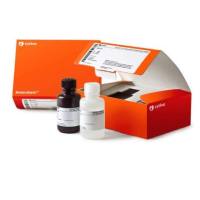Method for Detection and Quantitation of Leukocytes During Wound Healing
互联网
323
The wound repair process is a highly ordered series of events that encompasses hemostasis, inflammatory cell infiltration, tissue regrowth, and remodeling. An important component of normal wound healing is the generation of an inflammatory reaction, which is characterized by the sequential infiltration of neutrophils, macrophages, and lymphocytes (1 ). Neutrophils are the first leukocyte in the wound, entering within hours after initial injury. The function of neutrophils within wounds is most generally believed to be protective against wound infection (2 ,3 ). However, more recent observations suggest that neutrophils may also produce growth factors that promote tissue repair (4 ). Following neutrophil influx, macrophages are recruited to sites of injury by various chemoattractants, including chemokines (5 ,6 ). Previous studies have demonstrated that macrophages perform two distinct functions vital to the healing process. Initially, macrophages engulf and phagocytose wound debris and senescent cells, clearing the way for the growth of new dermal matrix. Subsequently, macrophages produce angiogenic and fibrogenic growth factors that promote the growth phase of repair (7 -9 ). As neutrophil and macrophage levels decrease, the late inflammatory phase of wound healing is typified by the ingress of T-lymphocytes (10 ). Specific subpopulations of T-lymphocytes have been demonstrated to either promote or inhibit repair, but the overall importance of lymphocytes to successful tissue repair remains somewhat unclear (11 -13 ).







